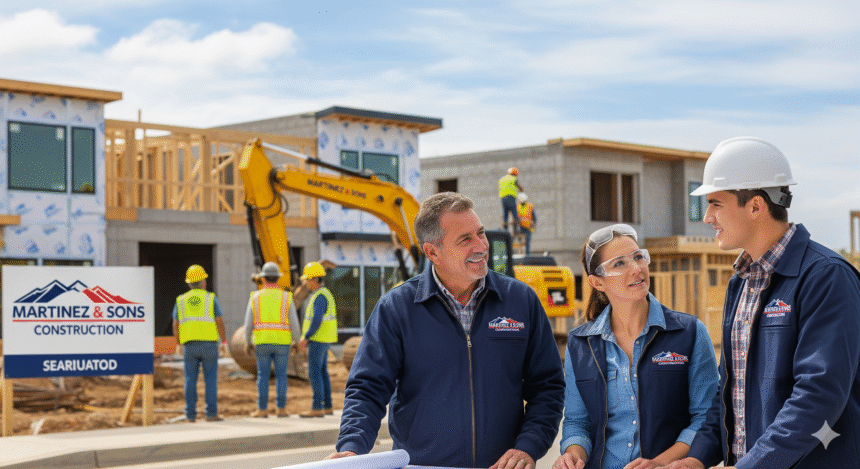In a world where large corporations dominate with their deep pockets, slick branding, and massive scale, family-owned construction firms quietly persist. They survive not by copying big firms but by leaning into what they have built: reputation, community trust, and a culture of doing things right.
Many family construction firms trace back generations. Their longevity is not just about staying open; it is about maintaining standards, relationships, and a legacy. These firms often survive economic downturns, changing regulations, or competition by holding on to values such as quality, honesty, and responsiveness, things corporate entities sometimes overlook in pursuit of scale.
Advantages That Big Players Cannot Always Match
First, customer relationships tend to run deeper. Since owners and senior family members are often directly involved, the chain between decision-maker and client is shorter. When changes come up during a project, decisions can be made faster. That means fewer delays and higher client satisfaction. Family contractors often stand out for their directness, transparency, and personal touch.
Second, a long-term view of business, rather than chasing quick profits. Legacy matters. Family firms are less likely to make rash choices just to boost quarterly numbers. Investments in craftsmanship, durable materials, safety, and even employee well-being get more attention.
Third, adaptability and resilience. Because family businesses are usually flatter in hierarchy, they can pivot faster. If regulation changes or market demand shifts, they can adjust operations, adopt new methods or materials without going through many layers of approvals.
Challenges They Face, and How Many Overcome Them
One major issue is succession planning. Who takes over when the founder retires or passes away? If this is not handled well, it can lead to internal strife, confusion among employees, or even worse, the downfall of what took decades to build.
Another is balancing tradition with innovation. Family firms may have strong emotional attachments to the way things were done. This can make adopting new technologies, modern project management tools, or digital workflows harder. Some senior leaders may resist change, feeling that it threatens the identity or values of the firm.
Also, there is often a tension between loyal hiring, keeping roles within the family, and bringing in outside experts. While bringing family in ensures trust and shared purpose, this can limit skill diversity, especially in specialist roles like finance, legal, or high-level tech. Some firms mitigate this by combining family leadership with external hires for specialized functions.
Real Examples: How Some Family Firms Are Making It
- Sir Robert McAlpine in the UK, founded in the 19th century, is still structured around family roots but modernized. It handles major projects in infrastructure, heritage, healthcare, and more.
- Tellepsen Builders in Houston, Texas, founded in 1909, is in its fourth generation. While local in origins, Tellepsen has maintained a high reputation in safety, quality, and continuity.
- A. G. Spanos Companies in the U.S. specializes in multifamily residences and commercial buildings. After the founder’s passing, the family continues running it.
What Makes the Difference: Key Strategies for Success
- Clarity in roles and leadership: Everyone knows who does what. When responsibilities are well-defined, chaos is minimized. Plans for what happens when a leader retires are made well in advance. Mentorship across generations helps.
- Willingness to adopt new tools: Using project management software, leaner supply chain practices, sustainability measures, and safety protocols. Modernity does not mean losing character; it means staying relevant.
- Maintaining values and trust: Family legacy gives firms a trust advantage. Keeping integrity and delivering quality builds a reputation across decades. One bad project can damage that trust more in a small firm than in a large one because the family name is closely tied to the business name.
- Balancing inside and outside talent: Combining family leadership with skilled non-family professionals helps fill gaps in expertise without losing the culture. It also brings fresh ideas.
- Strong community ties: Family firms often live where they work. They know local regulations, maintain local relationships, and support local economies. This grounded approach can win contracts, local goodwill, and a stable base of support when times are hard.
Why They Still Matter, and What Is Next
Family-run construction companies matter because they carry forward history. They are custodians of tradition. But more than that, they bring stability, ethical commitment, and often a more humane way of doing business. In sectors like construction, where projects affect communities, infrastructure, and livelihoods, this human element counts.
Looking ahead, family firms that want to stay relevant should double down on innovation, embrace sustainability, and be willing to blend tradition with change. Younger family members often bring digital fluency, new ideas, and ways to navigate environmental concerns. When the generations collaborate well, synergy happens.
If history shows anything, it is that firms that respect their roots while adapting are the ones that endure. In a world chasing scale and quarterly returns, there is still plenty of space, and respect, for those who build with care, over decades.









